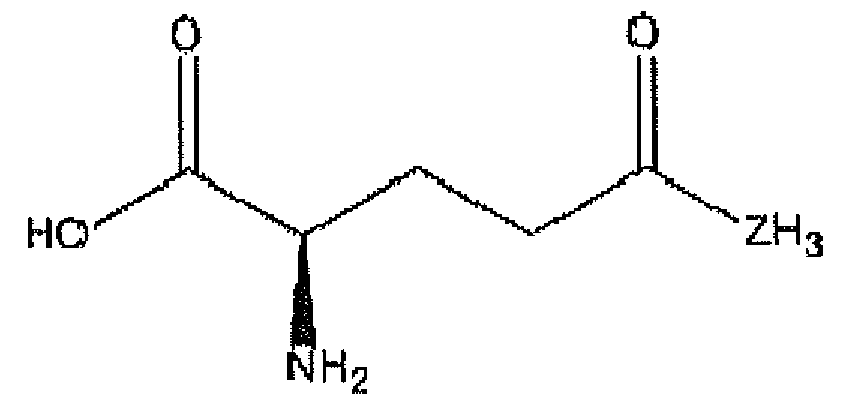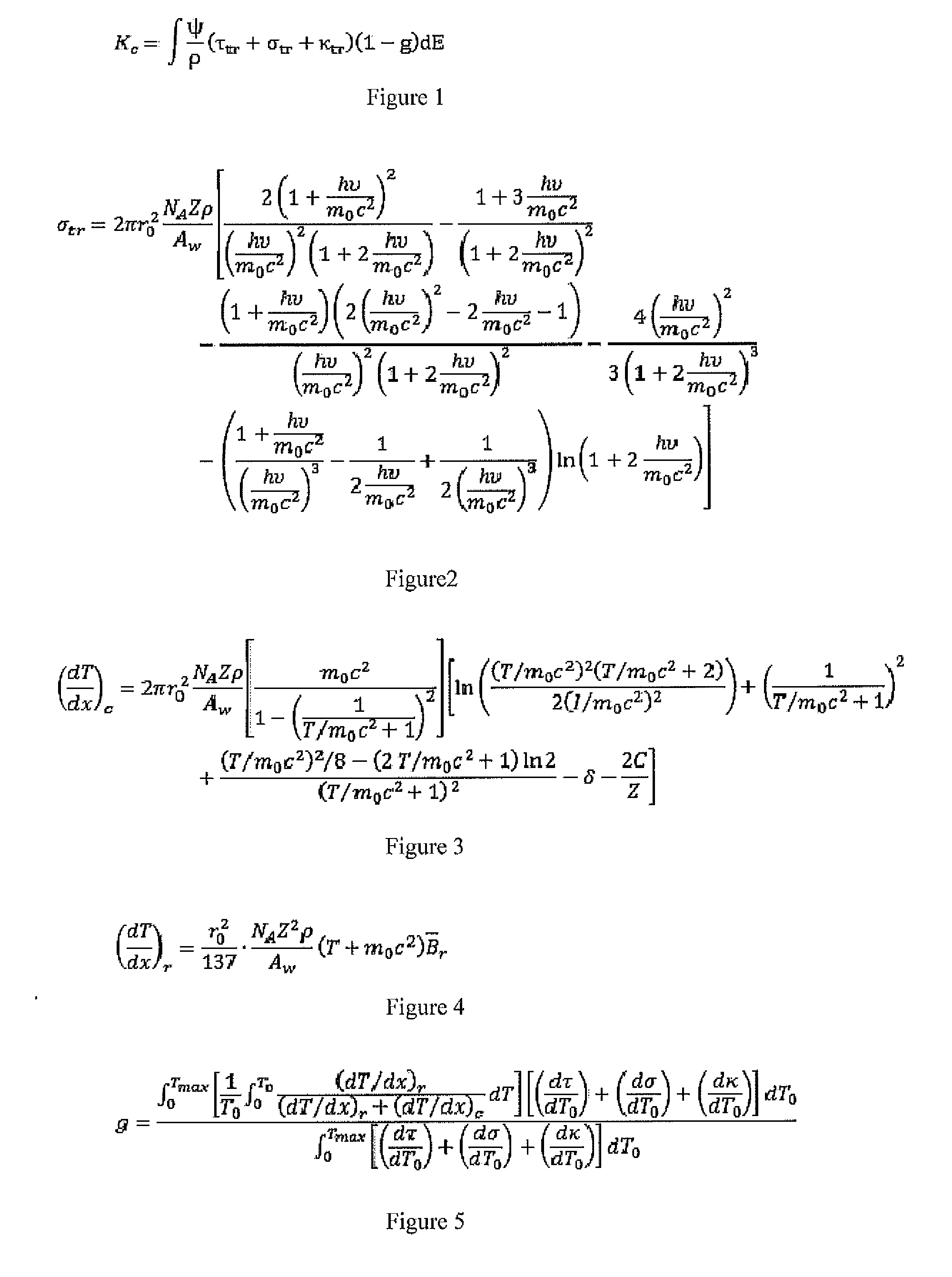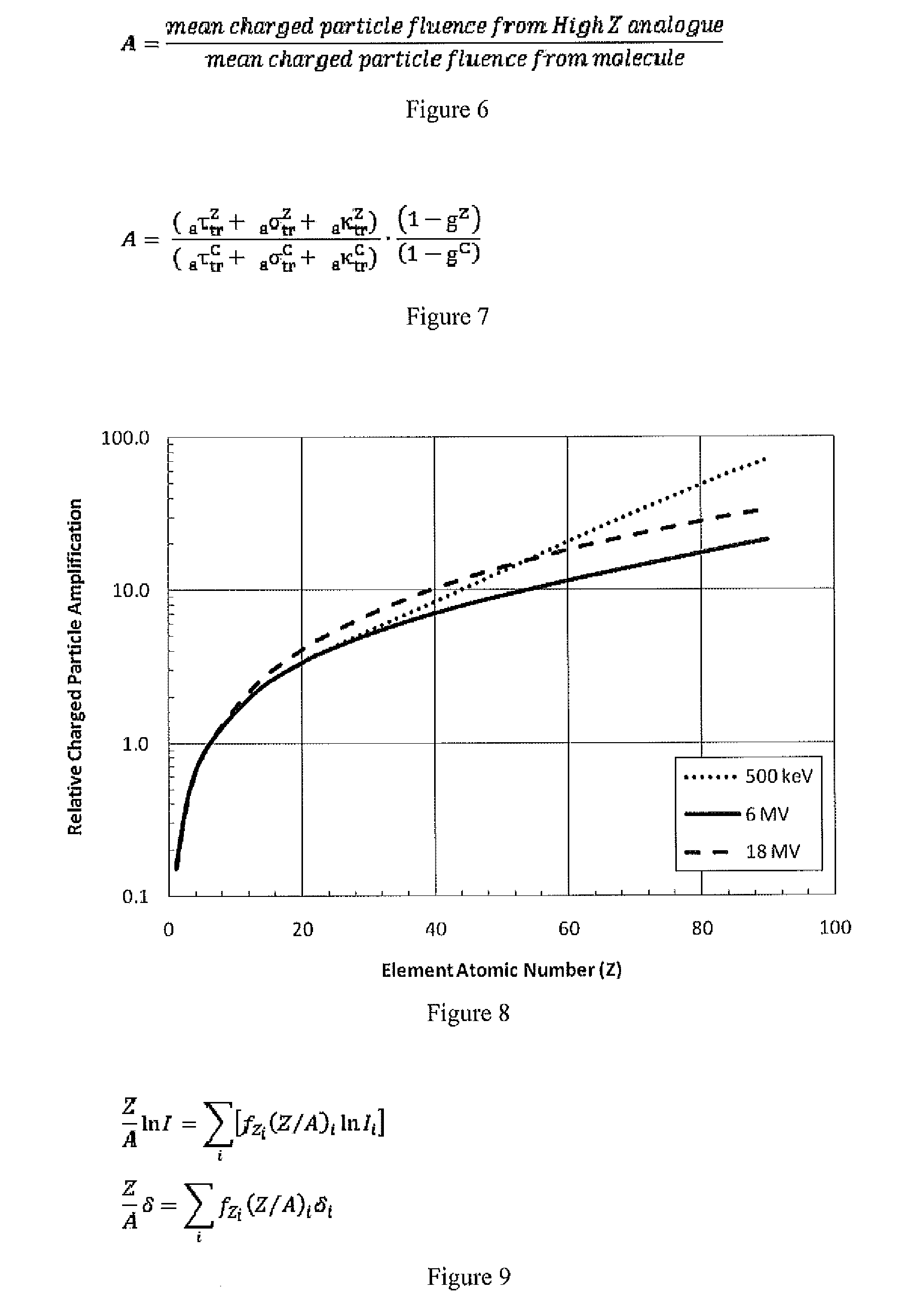Cancer Starvation Therapy
a cancer and starvation therapy technology, applied in the field of cancer starvation therapy, can solve the problems of damage to surrounding healthy tissue, ineffective against the target tissue, and limitations of radiation therapy,
- Summary
- Abstract
- Description
- Claims
- Application Information
AI Technical Summary
Benefits of technology
Problems solved by technology
Method used
Image
Examples
first embodiment
[0057]FIG. 11(a), as an example, shows a first generic embodiment of the present invention compound wherein the structural analogue of glutamine, more particularly the amine functional group NH2 is replaced with a high z element, and in this generic case, three Hydrogen atoms. The Nitrogen atom may also be replaced with any high z element that would require 2 (or any number) hydrogen atoms to bind with it, in which case such generic substitution would take the form ZH2, where Z is any high z element as previously defined. Such general first embodiment is denoted with the generic chemical formula C5H11ZNO3.
[0058]FIG. 11b provides a more specific embodiment of the first general embodiment presented in FIG. 11a above. As disclosed above the first embodiment consists of a structural analogue of glutamine where the amine functional group NH2 is replaced with a high z element and three Hydrogen atoms such as AuH3. The chemical formula for this specific compound is C5H11AuNO3.
[0059]FIG. 12...
second embodiment
[0060]FIG. 12b provides a more specific second embodiment of the general embodiment presented in FIG. 12a above. The present second embodiment consists of a structural analogue of glutamine where two carbon atoms are replaced with Cu atoms. The chemical formula for this specific compound is C3H10Cu2N2O3.
[0061]FIG. 13a, as en example, shows a third embodiment of the present invention, wherein structural analogues of glutamine, more particularly three carbon atoms are replaced with high z elements. Again Z is any high z element as previously defined, such general third embodiment is denoted with the generic chemical formula C2H10Z3N2O3.
third embodiment
[0062]FIG. 13b provides a more specific embodiment of the general embodiment presented in FIG. 13a above. The present third embodiment consists of a structural analogue of glutamine where three carbon atoms are replaced with Au atoms. The chemical formula for this specific compound is C2H10Au3N2O3.
[0063]As mentioned, the present compounds are designed to access the mitochondria, wherein the estimated charged particle density from interactions in the area immediately surrounding present invention compound increases dramatically relative to the glutamine it substitutes. For example, as previously mentioned, for a 6 MV photon beam, three gold atoms (Z=79) in such an analogue would yield a factor of 17×3=51:1 higher fluence rate than three carbon atoms they replace. The same replacement would yield a factor of 136:1 and 82:1 for 500 keV photons and an 18 MV beam, respectively.
PUM
| Property | Measurement | Unit |
|---|---|---|
| metallic | aaaaa | aaaaa |
| energy | aaaaa | aaaaa |
| size | aaaaa | aaaaa |
Abstract
Description
Claims
Application Information
 Login to View More
Login to View More - R&D
- Intellectual Property
- Life Sciences
- Materials
- Tech Scout
- Unparalleled Data Quality
- Higher Quality Content
- 60% Fewer Hallucinations
Browse by: Latest US Patents, China's latest patents, Technical Efficacy Thesaurus, Application Domain, Technology Topic, Popular Technical Reports.
© 2025 PatSnap. All rights reserved.Legal|Privacy policy|Modern Slavery Act Transparency Statement|Sitemap|About US| Contact US: help@patsnap.com



